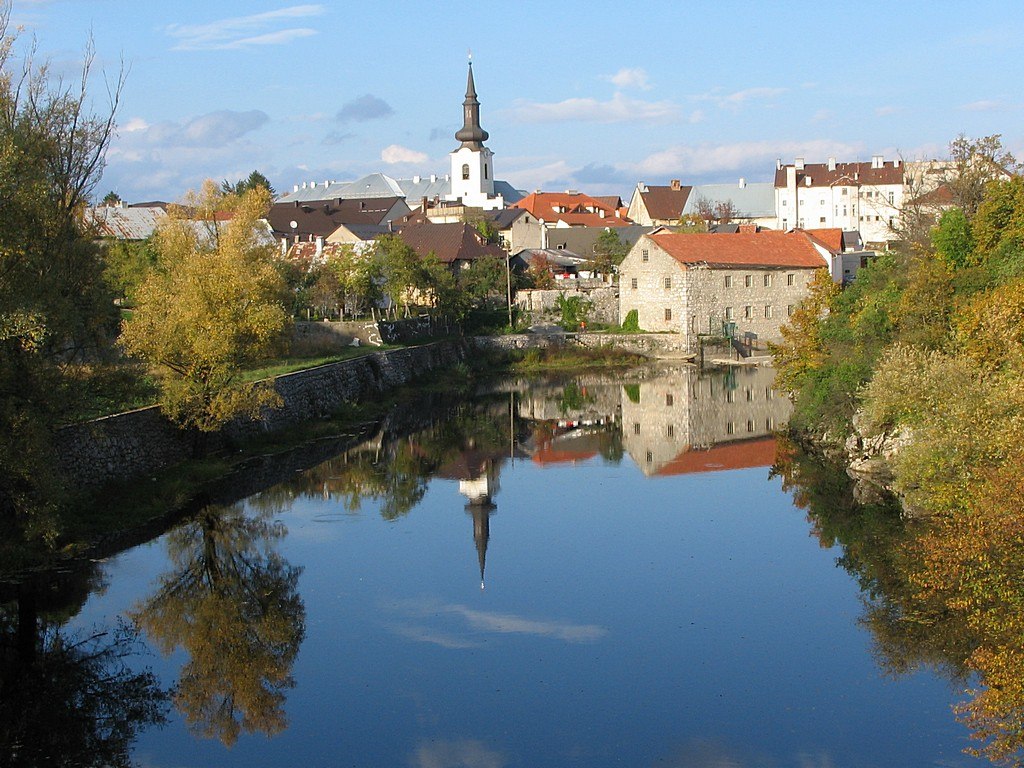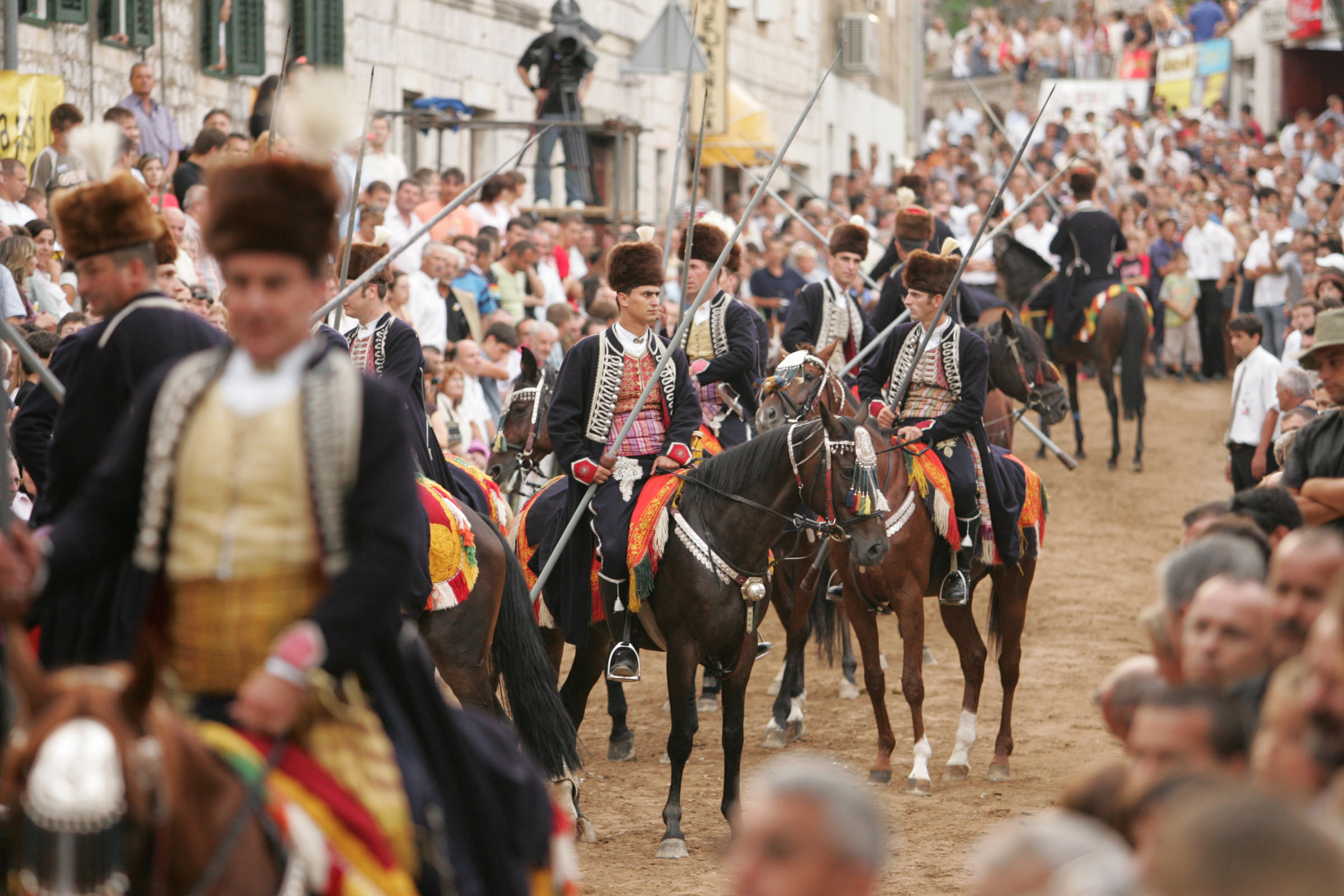Can You Name the World’s Smallest Town? (And a Few Other Superlatives in Croatia)
Can you name the smallest town in Croatia (and the world)? What about the biggest, oldest, or safest? Take a guess, and then check out our list of champion towns in six different categories
Did you know that the Croatian language doesn’t distinguish between the terms city and town? We call them both grad, which refers to an urbanized area with more than 10,000 inhabitants. Exceptions are made for less populated settlements if they have significant historical, economic or geographic features.
If there’s one thing we don’t lack around here, it’s places of historical significance, and thus our technical nomenclature goes down the drain. You’ll often see very sparsely populated places being referred to as towns - what’s basically a village in terms of population could have easily had a status of a city in medieval times.
When you think about Croatian cities and towns in terms of superlatives - largest, oldest, safest - none of the leading tourist destinations make the cut. The biggest Croatian cities sure have their appeal, but this time around, we’re looking at a few peculiar title holders among Croatian towns.
Smallest: Hum
This medieval hilltop settlement located in central Istria is not only the smallest town in Croatia, but also referred to as the smallest town in the world.
Its exact population is somewhat debatable: Hum had 30 residents at the time of the 2011 census, but more recent sources place the number closer to 20. We’re curious to see what the 2021 census data will show.
Entirely built in stone, Hum is also minuscule in size, but packs a handful of houses, one restaurant, two churches and a cemetery within its town walls. While it's not technically a town, its history, cultural significance and urban structure make it quite a distinctive settlement.
One of the many Istrian legends has it that the giants who built other central Istrian towns in the valley of the Mirna River used the leftover stone blocks to create Hum as one last masterpiece.
It’s a place worth visiting on a tour of Istria: it’s incredibly picturesque and well preserved, is the last stop of the scenic Glagolitic Alley route, and is also the home of biska, a popular Istrian brandy made of rakija, white mistletoe and several other herbs.
Largest: Gospić
Based on population alone, the winner in this category would definitely be Zagreb - expected and a bit too boring for a list of this kind, so we’ll go for different criteria instead. What’s the biggest town in Croatia based on surface area?
If you’d stick with Zagreb as the answer regardless, you’d be wrong. Surprisingly, the biggest town in Croatia only has a population of about 6,500, but is larger in size than Paris, Berlin or Barcelona.

Gospić / iNekic Wikimedia Commons
The biggest town in Croatia is Gospić, with an impressive area of 967 square kilometres. The town itself definitely isn’t that big - it owes its staggering size to some 50 smaller settlements in its wider area that administratively belong to Gospić, as there are no other municipal units nearby to take them under their wing.
Fun fact: Nikola Tesla, the groundbreaking inventor, was born in the nearby village of Smiljan and grew up in Gospić.
Highest: Delnice
Unsurprisingly, we’re heading to a mountainous area to look for an elevation champion. Located in the Gorski kotar region, the town of Delnice sits at an altitude of approximately 700m above the sea level. Its lowest point is situated at an altitude of 210m, and the highest at 1528m!

Delnice / Lan Vlad Wikimedia Commons
We’d be remiss not to mention Begovo Razdolje, officially the highest settlement in Croatia at an altitude of 1028m. It’s located in the same region, on the slopes of Bjelolasica mountain, and has a population of 40. While it’s not technically a town, it’s the only inhabited place in Croatia situated at an altitude over 1000m!
Oldest: Vinkovci
In a country that counts an amphitheatre and a Roman emperor’s palace among its cultural monuments, you’d probably look for the oldest settlement somewhere on the coast. And while it’s true that the Adriatic is lined with some of the oldest towns in Croatia, we have to look inland for the oldest of them all.
The town of Vinkovci in Slavonia has been continually inhabited for 8300 years, making it not only the oldest town in Croatia, but Europe as well!
Vinkovci has a lot to be proud of other than its age: it’s the birthplace of two Roman emperors, home to the oldest known calendar in Europe, and hosts the biggest Croatian folklore festival. Check out the 10 things to know about Vinkovci in this dedicated piece.
Youngest: it’s complicated
How to approach the concept of youth when it comes to a town? We can think of three main ways to look at it:
Among the 128 towns and cities in Croatia, Popovača is the one which gained the legal status of a town most recently. It used to be a municipality and was ‘upgraded’ to a town in 2013, effectively becoming the youngest town in Croatia in terms of administrative status.
If we ditch the legal criteria and focus on how long it’s been since the inception of a certain settlement, the youngest town in Croatia is Raša. It’s located in south-eastern Istria and was purposely designed and built as a mining town in the 1930s during Mussolini’s colonization of the region. Two pairs of streets lined with former miners’ houses meet at the central square, where you’ll find the church of St Barbara, uniquely built in the shape of an overturned mining cart.

Raša © Raša Tourist Board
And finally, what about the population? Well, this is a tough one to track down as the demographic situation varies from year to year, and data isn’t always readily available. With apologies to any other town that potentially took over the title at some point, we’ll declare Solin to be the youngest town in Croatia population-wise. Located near Split in Dalmatia, Solin has a population of some 30,000 inhabitants, 6,500 of which are under 18 years of age. The average age in Solin is 34,3 years - well below the Croatian average of 43,6 which ranks us among the oldest populations in all of Europe.
Safest: Sinj
Croatia is widely considered to be a safe country overall. Its population definitely seems to think so: a recent report published by Numbeo and represented on a map by Landgeist shows that Croatia is one of the countries in Europe where people feel safest walking alone at night. It ranks second, after Slovenia - read more here.
What’s the safest place in the second safest-feeling country in Europe, then? For this we turn to actual statistics in an annual report published by the magazine Zaštita and the Faculty of Economics in Zagreb. They rank the 29 biggest Croatian cities and towns according to four separate crime rates (assaults, traffic offences, property crimes and drug abuse).

Sinjska Alka © Romulic and Stojcic
The town of Sinj, located in the Dalmatian hinterland, ranked safest in Croatia four times in a row in recent years. It’s a nice title for Sinj and just one of things it’s known for - the most famous certainly being Sinjska Alka.
Inscribed on the UNESCO list of intangible cultural heritage, Sinjska Alka is a traditional knight’s game held every year in August. It commemorates the victory of 700 Croatian soldiers over the army of 60,000 Turkish invaders in 1715 - a report from a reenactment of the battle is available here.
Best Cities in Croatia Announced, Four Cities Defended Last Year's Title
October 21, 2020 – Among 28 nominated cities in the categories of quality of life, economy, and education and demographic policy, 10 of them received the award and the title as the best cities in Croatia.
As we already reported yesterday, Sveta Nedelja was named as the best city in the economy category for the third year in a row and is among the top five best Croatian cities for quality of life. Gradonačelnik.hr emphasizes the fact that Sveta Nedelja is the only city that managed to beat the competition three times in a row and win the title of the best city for the economy in the country. Besides the great success of this perspective city in Zagreb County, it is also worth mentioning other Croatian cities that excelled in this election.
The best cities in the category of the economy are also Hvar and Samobor. In the category of demography and education Cres, Labin, and Šibenik won, and in the category of all categories – the quality of life – the best Croatian cities are Krk, Rovinj, and Čakovec. The champion of the EU funds is Virovitica.
As many as four Croatian cities – Labin, Cres, Krk, and the already mentioned Sveta Nedelja – managed to defend the title of the best in our selection this year.
Four out of ten winning cities come from Istria and Primorje-Gorski Kotar Counties, but those counties also had the biggest number of nominated cities and nominations in all mentioned categories. Recall, eight cities of Istria County were competing with as many as 14 nominations, and Primorje-Gorski Kotar Counties were following with its six cities and nine nominations.
This year's selection for the best Croatian cities was held in Zagreb on Tuesday, and it has been successfully organized for the third year in a row by the Gradonačelnik.hr portal, Jutarnji list, and the Ipsos agency. Unfortunately, due to the situation with the coronavirus pandemic, a large number of finalists, and even winners, did not attend the award ceremony.
Unlike previous years, this year the Smart and Eco City categories were separated into a special selection, which is still ongoing, but a new category was introduced – the best county EU project.
Counties also received awards
After the public chose their favourite through online voting – the project PISMO of Sisak-Moslavina County and their agency SIMORA – the expert jury chose the winners in four categories. Virovitica-Podravina County with its project Be STEMpatičan! (Be STEMpathetic) is selected as the winner in the Contribution to the science and innovation category.
In the category Contribution to the local and regional community, the best project was NEWLIGHT of Krapina-Zagorje and Zagreb counties, ie the Regional Energy Agency of Northwestern Croatia (REGEA). Second place in the public selection, Mala Barka 2 of Primorje-Gorski Kotar County won in the category Contributions to cross-border cooperation, and Split-Dalmatia County won in the category of Contribution to entrepreneurship with the project Sustainable growth of small and medium enterprises with emphasis on cultural and creative industries.
Project PISMO Novska of Sisak-Moslavina County / PISMO
Top 10 Croatian Cities in Terms of Highest Enterprise Earnings
As Poslovni Dnevnik writes on the 11th of September, 2020, last year, there were 63,598 enterprises in the top 10 Croatian cities with the highest average earnings, and they employed 498,387 employees.
Entrepreneurs from Zagreb, Porec and Rijeka made the largest consolidated net profit last year and are leading the list of 10 Croatian cities with the highest earnings, according to an analysis published by the Financial Agency (Fina). Among the top 10 Croatian cities according to the net profit criterion are Sveta Nedelja, Dubrovnik, Velika Gorica, Vukovar, Zadar, Varazdin and Rovinj.
Fina notes that compared to the ranking list from 2018, Split, Karlovac and Nasice dropped off the list, and the new ones on the ranking list are Sveta Nedelja, Zadar and Varazdin.
The consolidated net profit of entrepreneurs in the top 10 Croatian cities last year amounted to 23.5 billion kuna, while the consolidated net profit of all enterprises in Croatia stood at 31.3 billion kuna. Last year, there were 63,598 entrepreneurs in the above listed cities, and they, as stated, employed 498,387 workers.
The analysis of the data from these cities confirms the large concentration of business of enterprises, taxpayers of profit tax, in the 10 aforementioned cities, whose share is 46.7 percent in the number of enterprises 51.4 percent in the number of employees, 62.7 percent in total revenues, 66.7 percent in period profit, 51.9 percent in period loss and 75.1 percent in net profit.
The reason for that, as stated by Fina, is primarily due to the share of enterprises and businesses based/headquartered in the City of Zagreb, which is logical.
Zagreb-based enterprises, all 45,608 of them with their 372,776 employees, unsurprisingly realised the highest net profit, of 18.5 billion kuna, which is 59 percent of the net profit of all enterprises operating in the country.
They are followed by businesses from Istrian city of Porec who achieved a consolidated net profit of 706.1 million kuna back in 2019, and enterprises from Rijeka with a profit of 641.8 million kuna.
Enterprises from Sveta Nedjelja, who realised a net profit of 621.5 million kuna, are in fourth place on the list of the top 10 Croatian cities in terms of net profit, while enterprises down in Dubrovnik are in fifth place with a net profit of 597.6 million kuna.
Businesses from Velika Gorica near Zagreb are in sixth place with a net profit of 558.7 million kuna, enterprises from Vukovar are in seventh place with a net profit of 504.5 million kuna, and Zadar-based companies who realised a net profit of 497.1 million kuna last year are ranked in eighth place.
At the bottom of the list are the enterprises from the continental Croatian town of Varazdin with a net profit of 487.6 million kuna, taking ninth place, while companies from Rovinj, with net profits of 362.4 million kuna are in the tenth place.
According to Fina, HEP, Pliva and Hrvatski Telekom/Croatian Telecom (HT/CT) contributed the most to the good results of companies based in Zagreb, Valamar Riviera did the same in in Porec and Plodine did so in Rijeka.
Maba-Com, in bankruptcy, contributed the most to the results in Sveta Nedjelja, Adriatic luxury hotels did so in Dubrovnik, Lidl Hrvatska did so in Velika Gorica, Prvo plinarsko drustvo did so in Vukovar, Tankerska plovidba did so in Zadar, Gumiimpex-GRP did so in Varazdin and Maistra did the same in Rovinj.
For the latest travel info, bookmark our main travel info article, which is updated daily.
Read the Croatian Travel Update in your language - now available in 24 languages


